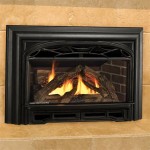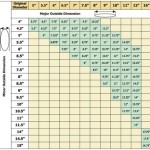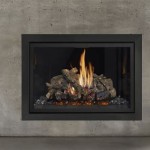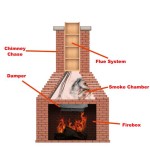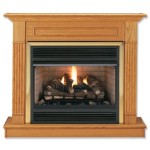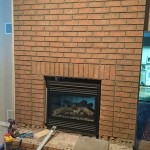Cleaning Granite Fireplace Surrounds: A Comprehensive Guide
Granite, a durable and aesthetically pleasing natural stone, is a popular choice for fireplace surrounds. Its resistance to heat and unique veining patterns add a touch of elegance and sophistication to any living space. However, granite, like any other surface, requires regular cleaning and maintenance to retain its beauty and prevent damage. This article provides a detailed guide on how to effectively clean a granite fireplace surround, ensuring its longevity and preserving its visual appeal.
The accumulation of soot, ash, and dust is inevitable when a fireplace is in regular use. These deposits can dull the granite's surface, making it appear lackluster and aged. Moreover, certain substances can react chemically with the granite, leading to staining or etching if left unaddressed. Therefore, understanding the proper cleaning techniques and utilizing appropriate cleaning agents is crucial for maintaining the integrity and appearance of the granite fireplace surround.
Essential Tools and Materials for Cleaning Granite Fireplace Surrounds
Before embarking on the cleaning process, it is essential to gather the necessary tools and materials. Having these items readily available will streamline the cleaning procedure and ensure a more efficient and effective outcome. The following is a comprehensive list of recommended supplies:
- Soft Cloths or Microfiber Towels: These are ideal for wiping surfaces without scratching them. Microfiber cloths are particularly effective at trapping dust and grime.
- Soft-Bristled Brush: A soft-bristled brush is useful for gently scrubbing away stubborn dirt and debris from textured or uneven surfaces.
- pH-Neutral Granite Cleaner: This is the most crucial element. A pH-neutral cleaner is specifically formulated for granite and will not damage or etch the stone. Avoid using acidic or alkaline cleaners, as these can cause irreversible damage.
- Warm Water: Warm water is an excellent solvent for many common types of grime.
- Spray Bottle: A spray bottle is convenient for applying the cleaning solution evenly across the granite surface.
- Baking Soda (Optional): Baking soda can be used as a gentle abrasive for removing stubborn stains.
- Hydrogen Peroxide (Optional): Hydrogen peroxide can be used to lighten certain types of stains, but should be used cautiously and sparingly. Always test in an inconspicuous area first.
- Dry Towel: A clean, dry towel is needed for drying the granite surface after cleaning.
- Protective Gloves: Wearing gloves will protect hands from cleaning solutions and potential irritants.
- Dust Mask (Optional): A dust mask can be helpful when dealing with excessive soot or ash.
Step-by-Step Guide to Cleaning a Granite Fireplace Surround
The cleaning process should be approached systematically to ensure thoroughness and minimize the risk of damage. The following step-by-step guide outlines the recommended procedure for cleaning a granite fireplace surround:
- Preparation: Begin by preparing the area around the fireplace. Cover the floor with a drop cloth or old towels to protect it from spills and debris. Remove any decorative items from the fireplace surround.
- Dry Cleaning: Use a soft cloth, microfiber towel, or soft-bristled brush to remove loose dust, ash, and soot from the granite surface. Pay close attention to corners, crevices, and textured areas where debris may accumulate. A vacuum cleaner with a soft brush attachment can also be used for this step.
- Applying the Cleaning Solution: Dilute the pH-neutral granite cleaner according to the manufacturer's instructions. Pour the diluted solution into a spray bottle and lightly mist the granite surface. Avoid oversaturating the stone, as excessive moisture can seep into the granite and potentially cause discoloration or damage.
- Gentle Scrubbing: Using a soft cloth or microfiber towel, gently scrub the granite surface in a circular motion. Focus on areas with visible stains or grime buildup. For stubborn stains, use a soft-bristled brush to carefully scrub the affected area. Avoid using excessive pressure, as this can scratch the granite.
- Rinsing: After scrubbing, rinse the granite surface with clean, warm water. Use a clean cloth or sponge to remove any remaining cleaning solution. Ensure that all traces of the cleaner are removed, as residue can attract dirt and dull the granite's shine.
- Drying: Thoroughly dry the granite surface with a clean, dry towel. This will prevent water spots from forming and help restore the granite's natural luster.
- Inspecting and Repeating (If Necessary): After the granite surface is dry, inspect it for any remaining stains or grime. If necessary, repeat the cleaning process on the affected areas.
Addressing Stubborn Stains on Granite Fireplace Surrounds
Sometimes, general cleaning methods are not sufficient to remove stubborn stains from granite. In such cases, more targeted approaches may be required. However, it is crucial to exercise caution and avoid using harsh chemicals or abrasive materials that can damage the granite.
- Baking Soda Paste: For organic stains such as soot or grease, a baking soda paste can be effective. Mix baking soda with water to form a thick paste. Apply the paste to the stained area and allow it to sit for 30 minutes to an hour. Then, gently scrub the area with a soft cloth or brush and rinse thoroughly with water.
- Hydrogen Peroxide: For light-colored granite, hydrogen peroxide can be used to lighten certain stains. However, it is essential to test a small, inconspicuous area first to ensure that the hydrogen peroxide does not discolor or damage the stone. Apply hydrogen peroxide to a clean cloth and gently blot the stained area. Allow it to sit for a few minutes, then rinse thoroughly with water.
- Professional Granite Stain Remover: If the above methods fail, consider using a professional granite stain remover. These products are specifically formulated to remove various types of stains from granite without causing damage. Always follow the manufacturer's instructions carefully when using these products.
- Poultice Method: For deep-set stains, a poultice may be necessary. A poultice is a paste made from absorbent materials that draws out the stain from the granite. Mix a poultice powder (available at stone supply stores) with the appropriate liquid (usually water or hydrogen peroxide) to form a thick paste. Apply the paste to the stained area, cover it with plastic wrap, and tape the edges to seal it. Allow the poultice to sit for 24-48 hours, then remove the plastic wrap and scrape off the dried paste. Rinse the area thoroughly with water.
It is important to remember that some stains may be permanent, especially if they have been present for a long time or have penetrated deeply into the granite. In such cases, it may be necessary to consult with a professional stone restoration company for more advanced cleaning or repair options.
Regular cleaning and maintenance are essential for preserving the beauty and longevity of a granite fireplace surround. By following the guidelines outlined in this article, individuals can effectively clean their granite fireplace surrounds and maintain their elegance for years to come. The key to success lies in using the right tools and materials, employing gentle cleaning techniques, and addressing stains promptly before they become deeply embedded.
How To Clean A Granite Hearth

How To Clean A Granite Or Marble Fireplace Paramount Stone

How To Maintain Your Granite Or Marble Hearth Omega Stone

How To Clean A Stone Fireplace Homeowner S Guide Bob Vila

How To Prep Your Granite Hearth For Winter

How To Clean A Stone Fireplace Homeowner S Guide Bob Vila

Maintaining Fireplace Beauty Service In Richmond Va

How To Clean A Granite Hearth Infographic

How To Maintain Granite And Marble Fireplace Surrounds

How To Clean A Natural Stone Fireplace Step By Guide Granite Gold

